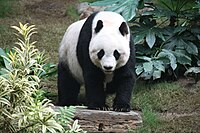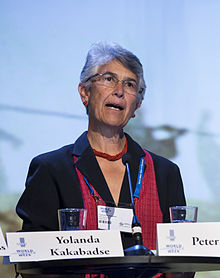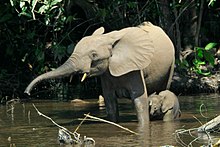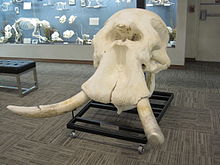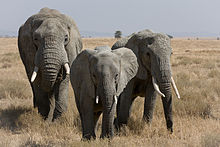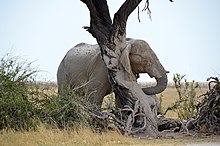 | |
| Abbreviation | WWF |
|---|---|
| Formation | 29 April 1961 (as World Wildlife Fund)a |
| Founders | |
| Type | Charitable trust |
| Purpose | |
| Headquarters | Rue Mauverny, Gland, Vaud, Switzerland |
Region
| Worldwide |
| Methods |
|
President
| Pavan Sukhdev |
President Emeritus
| Prince Philip, Duke of Edinburgh |
Director General
| Marco Lambertini |
Revenue
| € 654 million (2013) |
| Website | wwf www |
The World Wide Fund for Nature (WWF) is an international non-governmental organization founded in 1961, working in the field of the wilderness preservation, and the reduction of human impact on the environment. It was formerly named the World Wildlife Fund, which remains its official name in Canada and the United States.
WWF is the world's largest conservation organization with over five million supporters worldwide, working in more than 100 countries, supporting around 1,300 conservation and environmental projects. They have invested over $1 billion in more than 12,000 conservation initiatives since 1995. WWF is a foundation with 55% of funding from individuals and bequests, 19% from government sources (such as the World Bank, DFID, USAID) and 8% from corporations in 2014.
WWF aims to "stop the degradation of the planet's natural environment and to build a future in which humans live in harmony with nature." The Living Planet Report is published every two years by WWF since 1998; it is based on a Living Planet Index and ecological footprint calculation. In addition, WWF has launched several notable worldwide campaigns including Earth Hour and Debt-for-Nature Swap, and its current work is organized around these six areas: food, climate, freshwater, wildlife, forests, and oceans.
WWF has been accused by BuzzFeed News, Kathmandu Post, the Rainforest Foundation Fund and Survival International of protecting paramilitary forces funded by the organization to fight poaching that have engaged in human rights abuses despite an internal report acknowledging them in 2015. They have attacked African and South Asian villages, torturing, raping, and killing villagers. Investigators also revealed that the WWF actively engaged in cover ups and lobbied to release rangers when they were arrested.
History
Precursor: the Conservation Foundation
The Conservation Foundation, a precursor to WWF, was founded in 1948 by Fairfield Osborn as an affiliate of the New York Zoological Society (today known as the Wildlife Conservation Society) with an aim of protecting the world's natural resources. The advisory council included leading scientists such as Charles Sutherland Elton, G. Evelyn Hutchinson, Aldo Leopold, Carl Sauer, and Paul Sears. It supported much of the scientific work cited by Rachel Carson's Silent Spring, including that of John L. George, Roger Hale, Robert Rudd, and George Woodwell.
Founding: Morges Manifesto
Earth Hour 2013 at the Verona Arena amphitheatre, Piazza Bra, Verona, Italy before (top) and while the street lighting was switched off.
The idea for a fund on behalf of endangered animals was officially proposed by Victor Stolan to Sir Julian Huxley in response to articles he published in the British newspaper The Observer. This proposal led Huxley to put Stolan in contact with Max Nicholson, a person who had had thirty years experience of linking progressive intellectuals with big business interests through the Political and Economic Planning think tank. Nicholson thought up the name of the organization. WWF was conceived on 29 April 1961, under the name of World Wildlife Fund, and its first office was opened on 11 September that same year in Morges, Switzerland.
WWF was conceived to act as a funding institution for existing conservation groups such as the International Union for the Conservation of Nature and Natural Resources and The Conservation Foundation. Godfrey A. Rockefeller also played an important role in its creation, assembling the first staff.
Its establishment was marked with the signing of the "Morges
Manifesto", the founding document that sets out the fund's commitment to
assisting worthy organizations struggling to save the world's wildlife:
They need above all money, to carry out mercy missions and to meet conservation emergencies by buying land where wildlife treasures are threatened, and in many other ways. Money, for example, to pay guardians of wildlife refuges .... Money for education and propaganda among those who would care and help if only they understood. Money to send out experts to danger spots and to train more local wardens and helpers in Africa and elsewhere. Money to maintain a sort of 'war room' at the international headquarters of conservation, showing where the danger spots are and making it possible to ensure that their needs are met before it is too late.
— Morges Manifesto
Dutch Prince Bernhard of Lippe-Biesterfeld
helped found the World Wildlife Fund, becoming its first President in
1961. In 1963, the Foundation held a conference and published a major
report warning of anthropogenic global warming, written by Noel Eichhorn based on the work of Frank Fraser Darling (then foundation vice president), Edward Deevey, Erik Eriksson, Charles Keeling, Gilbert Plass, Lionel Walford, and William Garnett.
In 1970, along with Duke of Edinburgh and a few associates, Prince Bernhard established the WWF's financial endowment The 1001: A Nature Trust to handle the WWF's administration and fund-raising. 1001 members each contributed $10,000 to the trust. Prince Bernhard resigned his post after being involved in the Lockheed Bribery Scandal.
Recent development
WWF has set up offices and operations around the world. It originally
worked by fundraising and providing grants to existing non-governmental
organizations, based on the best-available scientific knowledge and with
an initial focus on the protection of endangered species. As more resources became available, its operations expanded into other areas such as the preservation of biological diversity, sustainable use of natural resources, the reduction of pollution, and climate change.
The organization also began to run its own conservation projects and
campaigns, and by the 1980s started to take a more strategic approach to
its conservation activities.
A WWF hot air balloon in Mexico (2013).
In 1986, the organization changed its name to World Wide Fund for Nature,
while retaining the WWF initials. However, it continued at that time to
operate under the original name in the United States and Canada.
That year was the 25th anniversary of WWF's foundation, an event
marked by a gathering in Assisi, Italy to which the organization's
International President HRH Prince Philip, the Duke of Edinburgh,
invited religious authorities representing Buddhism, Christianity,
Hinduism, Islam and Judaism. These leaders produced The Assisi
Declarations, theological statements showing the spiritual relationship
between their followers and nature that triggered a growth in the
engagement of those religions with conservation around the world.
In the 1990s, WWF revised its mission statement to:
Stop the degradation of the planet's natural environment and to build a future in which humans live in harmony with nature, by:
- conserving the world's biological diversity;
- ensuring that the use of renewable natural resources is sustainable; [and]
- promoting the reduction of pollution and wasteful consumption.
WWF scientists and many others identified 238 ecoregions that represent the world's most biologically outstanding terrestrial, freshwater and marine habitats, based on a worldwide biodiversity analysis which the organization says was the first of its kind.
In the early 2000s (decade), its work was focused on a subset of these
ecoregions, in the areas of forest, freshwater and marine habitat conservation, endangered species conservation, climate change, and the elimination of the most toxic chemicals.
We shan't save all we should like to, but we shall save a great deal more than if we had never tried.
— Sir Peter Scott
In 1990, the Conservation Foundation was completely merged into WWF,
after becoming an affiliate of WWF-US in 1985 when it became a distinct
legal entity but with the same staff and board.
The organization now known as the Conservation Foundation in the United
States is the former Forest Foundation of DuPage County. In 1996, the organization obtained general consultative status from UNESCO.
Panda symbol
The giant panda has become the symbol of WWF.
WWF's giant panda logo originated from a panda named Chi Chi that had been transferred from Beijing Zoo to London Zoo
in 1958, three years before WWF became established. Being famous as
the only panda residing in the Western world at that time, its uniquely
recognisable physical features and status as an endangered species were
seen as ideal to serve the organization's need for a strong recognisable
symbol that would overcome all language barriers. The organization also needed an animal that would have an impact in black and white printing. The logo was then designed by Sir Peter Scott from preliminary sketches by Gerald Watterson, a Scottish naturalist.
The logo was slightly simplified and made more geometric in 1978,
and was revised significantly again in 1986, at the time that the
organization changed its name, with the new version featuring solid
black shapes for eyes. In 2000 a change was made to the font used for the initials "WWF" in the logo.
Organization and operation
Policy-making
Policies
of the WWF are made by board members elected for three-year terms. An
Executive Team guides and develops WWF's strategy. There is also a
National Council which stands as an advisory group to the board and a
team of scientists and experts in conservation who research for WWF.
National and international law plays an important role in
determining how habitats and resources are managed and used. Laws and
regulations become one of the organization's global priorities.
The WWF has been opposed to the extraction of oil from the Canadian tar sands and has campaigned on this matter. Between 2008 and 2010 the WWF worked with The Co-operative Group, the UK's largest consumer co-operative
to publish reports which concluded that: (1) exploiting the Canadian
tar sands to their full potential would be sufficient to bring about
what they described as 'runaway climate change;
(2) carbon capture and storage (CCS) technology cannot be used to
reduce the release of carbon dioxide into the atmosphere to a level
comparable to that of other methods of oil extraction; (3) the $379 billion which is expected to be spent extracting oil from tar sands could be better spent on research and development in renewable energy technology; and (4) the expansion of tar sands extraction poses a serious threat to the caribou in Alberta .
The organization convinces and helps governments and other
political bodies to adopt, enforce, strengthen and/or change policies,
guidelines and laws that affect biodiversity and natural resource use.
It also ensures government consent and/or keeps their commitment to
international instruments relating to the protection of biodiversity and
natural resources.
In 2012, David Nussbaum, Chief Executive of WWF-UK, spoke out against the way shale gas is used in the UK, saying: "... the Government must reaffirm its commitment to tackling climate change and prioritise renewables and energy efficiency."
Collaboration
WWF's strategy for achieving its mission specifically concentrates on restoring populations of 36 species (species or species groups that are important for their ecosystem or to people, including elephants, tunas, whales, dolphins and porpoises), and ecological footprint in 6 areas (carbon emissions, cropland, grazing land, fishing, forestry and water).
The organization also works on a number of global issues driving biodiversity loss
and unsustainable use of natural resources, including finance, business
practices, laws, and consumption choices. Local offices also work on
national or regional issues.
WWF works with a large number of different groups to achieve its
goals, including other NGOs, governments, business, investment banks,
scientists, fishermen, farmers and local communities. It also undertakes
public campaigns to influence decision makers, and seeks to educate
people on how to live in a more environmentally friendly manner.It urges
people to donate funds to protect the environment. The donors can also
choose to receive gifts in return.
List of presidents
Yolanda Kakabadse, WWF president from 2010 to 2017
| Years | Name |
|---|---|
| 1961–1976 | Prince Bernhard of Lippe-Biesterfeld |
| 1976–1981 | John Hugo Loudon |
| 1981–1996 | Prince Philip, Duke of Edinburgh |
| 1996–1999 | Syed Babar Ali |
| 2000 | Ruud Lubbers |
| 2000–2001 | Sara Morrison |
| 2001–2010 | Chief Emeka Anyaoku |
| 2010–2017 | Yolanda Kakabadse |
| 2018–present | Pavan Sukhdev |
Notable initiatives and programs
Bird's Nest in Beijing, China during Earth Hour 2010.
Campaigns
Global initiatives
Since 2008, through its Global Programme Framework (GPF), WWF has said it is concentrating its efforts on 13 global initiatives:
- Amazon
- Arctic
- China for a Global Shift
- Climate and Energy
- Coastal East Africa
- Coral Triangle
- Forest and Climate
- Green Heart of Africa
- Heart of Borneo
- Living Himalayas
- Market Transformation
- Smart Fishing
- Tigers
Publications
WWF publishes the Living Planet Index in collaboration with the Zoological Society of London. Along with ecological footprint calculations, the Index is used to produce a bi-yearly Living Planet Report giving an overview of the impact of human activity on the world.
The organization also regularly publishes reports, fact sheets
and other documents on issues related to its work, to raise awareness
and provide information to policy and decision makers.
Promotions
- No One's Gonna Change Our World was a charity album released in 1969, for the benefit of the WWF.
- Peter Rose and Anne Conlon are music theatre writers, well known for their environmental musicals for children, who were commissioned by WWF-UK to write several environmental musicals as part of an education plan. Some were narrated by David Attenborough, and broadcast on television in numerous countries.
- The British pop group S Club 7 were ambassadors for WWF-UK during their time together as a band (1999-2003). Each of the members sponsored an endangered animal, and in 2000, traveled to the various locations around the world of their chosen animals for a seven-part BBC documentary series entitled S Club 7 Go Wild.
- Environmentally Sound: A Select Anthology of Songs Inspired by the Earth is a benefit album released in 2006, for WWF-Philippines, featuring artists that included Up Dharma Down, Radioactive Sago Project, Kala, Cynthia Alexander, and Joey Ayala.
- In June 2012, WWF launched an online music download store with fairsharemusic from which 50% of the profit goes to the charity.
- In April 2015, Hailey Gardiner released her solo EP, titled The Woods. In honor of Earth Day, 15% of the proceeds made towards the purchase of the EP would be donated to the WWF.
Controversies and disputes
ARD Documentary
The German public television ARD aired a documentary on 22 June 2011 that claimed to show how the WWF cooperates with corporations such as Monsanto, providing sustainability certification in exchange for donations – essentially greenwashing. WWF has denied the allegations.
By encouraging high-impact eco-tourism, the program alleges that WWF
contributes to the destruction of habitat and species it claims to
protect. WWF-India is not active at the tiger reserve given as the
example,[citation needed]
but it is active elsewhere seeking to limit adverse tourism effects and
better sharing of tourism benefits to local communities.
The program also alleges WWF certified a palm oil plantation operated by Wilmar International, a Singaporean company, on the Indonesian island of Borneo,
even though the establishment of the plantation led to the destruction
of over 14,000 hectares of rainforest. Only 80 hectares were ultimately
conserved, the ARD documentary claims. According to the programme, two
orangutans live on the conserved land, but have very slim chances of
survival because no fruit trees remain and the habitat is too small to
sustain them. To survive, they steal palm nuts from the neighbouring
plantation, thereby risking being shot by plantation workers. WWF notes
that the plantation filmed is PT Rimba Harapan Sakti, which has not been
certified as a sustainable producer by the Round Table on Sustainable Palm Oil.
Corporate Partnerships
WWF has been accused by the campaigner Corporate Watch of being too close to business to campaign objectively. WWF claims partnering with corporations such as Coca-Cola, Lafarge, Carlos Slim's and IKEA will reduce their effect on the environment.
WWF received €56 million (US$80 million) from corporations in 2010 (an
8% increase in support from corporations compared to 2009), accounting
for 11% of total revenue for the year.
In 2012, German investigative journalist Wilfried Huissmann
published a book called "The Silence of the Pandas". It became a
bestseller in Germany,
but was banned from Britain until 2014, when it was released under the
title of "Pandaleaks", after a series of injunctions and court orders.
The book criticizes WWF for its supposed involvement with corporations
that are responsible for large-scale destruction of the environment,
such as Coca-Cola, and gives details into the existence of the secret 1001 Club, whose members, Huismann claims, continue to have an unhealthy influence on WWF's policy making. However, WWF has sought to deny the allegations made against it.
Human Rights Abuses by Paramilitaries
In 2016, a report by Survival International
found that WWF-funded paramilitaries are not only committing abuses
against the indigenous Baka and Bayaka in the Congo Basin who "face
harassment and beatings, torture and death", but are also corrupt and
aid in the destruction of conserved areas. The report accused the WWF
and its guards of partnering with several logging companies who carried
out deforestation, while the rangers ignored wildlife trafficking
networks.
In 2019, an investigation by BuzzFeed News
revealed that paramilitary groups funded by the organisation are
engaged in serious human rights abuses against villagers, and the
organisation has covered up the incidents and acted to protect the
perpetrators from law enforcement. These armed groups were found to
torture, sexually assault, and execute villagers based on false
accusations. In one instance found by BuzzFeed News investigators, an
11-year-old boy was tortured by WWF-funded rangers in front of his
parents;
the WWF ignored all complaints against the rangers. In another
incident, a ranger attempted to rape a Tharu woman and, when she
resisted, attacked her with bamboo stick until she lost consciousness.
While the ranger was arrested, the woman was pressured not to press
charges, resulting in the ranger going free and later receiving a medal.
In 2010, WWF-sponsored rangers killed a 12-year-old girl who was
collecting tree bark in Bardiya National Park.
Park and WWF officials actively obstructed investigations in these
cases, by "falsifying and destroying evidence, falsely claiming the
victims were poachers, and pressuring the families of the victims to
withdraw criminal complaints".
In the Central African Republic,
WWF officials were involved in an arms deal, where the organization
paid for 15 AK assault rifles and ammunition; but part of the money went
unaccounted and apparently defrauded by the CAR army representatives
selling the weapons. WWF attempted to cover up the failed deal, not
being allowed to trade arms.
The Kathmandu Post, which cooperated with BuzzFeed News on the investigations in Nepal,
revealed intense lobbying and political pressure to release WWF-funded
rangers arrested for murder. They interviewed activists who claimed they
were promised donations for pressuring victims of abuse to drop charges
against the rangers. When the local Tharu community protested, WWF officials carried out a counter-protest in favour of the accused and used park elephants to block Prithvi Highway.
Another investigation by Rainforest Foundation UK revealed that they found evidence of widespread physical and sexual assault by ‘eco-guards’ employed by the Salonga National Park in the Democratic Republic of Congo
funded by the WWF. These include two cases of gang rape, two
extra-judicial killings, and multiple accounts of torture and other
forms of mistreatment committed by park guards.
In reply to the investigations, the WWF promised to investigate the allegations.
Hunting
The President of Honor of WWF in Spain used to be King Juan Carlos I, who has been a known hunting enthusiast. In 1962, when he was 24, he was invited by the German Baron Werner von Alvensleben to a hunt in Mozambique. Since then, the Spanish King has taken part in hunting forays in Africa and Eastern Europe. In October 2004, he was a member of a hunt in Romania that killed a wolf and nine brown bears, including one that was pregnant, according to the Romanian newspaper Romania Libera.
He was also accused by a Russian official of killing a bear called
Mitrofan, supposedly after giving vodka to the animal, in an episode
that sparked controversy in Spain, although the claim was never proven. In the same year, according to The Guardian, the Polish government allowed him to kill a European bison in Białowieża Forest, even though it is an endangered species.
Further controversy arose in April 2012 when the Spanish King's participation in an elephant hunt in Botswana was discovered only after he returned to Spain on an emergency flight after tripping over a step and fracturing his hip. Many Spanish environmental groups and leftist parties criticized the monarch's hobby,
and the WWF stripped him of the honorary position in July 2012, in an
extraordinary assembly by 94% of the votes of the members.
Prince Charles, the UK head of the WWF,[68] has stated that he enjoys hunting.
Initialism Dispute
In 2000, the World Wide Fund for Nature sued the World Wrestling Federation (now named WWE)
for unfair trade practices. Both parties had shared the initials "WWF"
since 1979. The conservation organization claimed that the professional wrestling company had violated a 1994 agreement regarding international use of the WWF initials.
On 10 August 2001, a UK court ruled in favour of the World Wide
Fund for Nature. The World Wrestling Federation filed an appeal in
October 2001. However, on 10 May 2002, the World Wrestling Federation
changed its Web address from WWF.com to WWE.com,
and replaced every "WWF" reference on the existing site with "WWE", as a
prelude to changing the company's name to "World Wrestling
Entertainment." Its stock ticker also switched from WWF to WWE.
The wrestling organization's abandonment of the "WWF" initialism
did not end the two organizations' legal conflict. Later in 2002, the
World Wide Fund for Nature petitioned the court for $360 million in
damages, but was not successful. A subsequent request to overturn by the
World Wide Fund for Nature was dismissed by the British Court of Appeal
on 28 June 2007. In 2003, World Wrestling Entertainment won a limited
decision which permitted them to continue marketing certain pre-existing
products with the abandoned WWF logo. However, WWE was mandated to
issue newly branded merchandise such as apparel, action figures, video
games, and DVDs
with the "WWE" initials. Additionally, the court order required the
company to remove both auditory and visual references to "WWF" in its
library of video footage outside the United Kingdom.
Starting with the 1,000th episode of Raw in July 2012, the
WWF "scratch" logo is no longer censored in archival footage. In
addition, the WWF initials are no longer censored when spoken or when
written in plain text in archival footage. In exchange, WWE is no
longer permitted to use the WWF initials or logo in any new, original
footage, packaging, or advertising, with any old-school logos for
retro-themed programming now using a modification of the original WWF
logo without the F.
Mekong River Dolphins Report
In June 2009, Touch Seang Tana, chairman of Cambodia's Commission for Conservation and Development of the Mekong River Dolphins Eco-tourism Zone, argued that the WWF had misrepresented the danger of extinction of the Mekong dolphin to boost fundraising.
The report stated that the deaths were caused by a bacterial disease
that became fatal due to environmental contaminants suppressing the
dolphins' immune systems.
He called the report unscientific and harmful to the Cambodian
government and threatened the WWF's Cambodian branch with suspension
unless they met with him to discuss his claims.
Touch Seang Tana later said he would not press charges of supplying
false information and would not make any attempt to prevent WWF from
continuing its work in Cambodia, but advised WWF to adequately explain
its findings and check with the commission before publishing another
report. After this, in January 2012, Touch Seang Tana signed the "Kratie
Declaration on the Conservation of the Mekong River Irrawaddy Dolphin"
along with WWF and the Cambodian Fisheries Administration, an agreement
binding the parties to work together on a "roadmap" addressing dolphin
conservation in the Mekong River.



